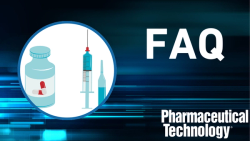More Hot Topics in Packaging for 2025
Phamaceutical Technology® spoke with Mark Staiger, PhD, head of strategy at Schott Pharma, and Stefan Verheyden, global vice president, sales, pharma & biopharma solutions—injectables at Gerresheimer, about the outlook for pharma packaging in 2025.
PharmTech: What drug modalities is the market most focused on?
Mark Staiger (Schott): The market is heavily focusing on GLP-1 agonists, [messenger] RNA-based drugs, and antibody-drug conjugates (ADCs). Significant investment and development are also seen in cell and gene therapies, CAR-Ts [chimeric antigen receptor T-cell therapies], and RNA [interference]. Personalized medicines are gaining traction, with companies like BioNTech making substantial progress.
Stefan Verheyden (Gerresheimer): Almost half of newly approved drugs by FDA, EMA [European Medicines Agency] or other regulatory authorities are biologics. Depending on the therapeutic area and the route of administration, biologic drugs present several challenges to effective delivery, including the potential for elevated viscosity with increased concentration, larger volumes, and the sensitive nature of the biomolecules. The pharmaceutical primary packaging and the respective drug delivery devices must address these challenges and ensure drug stability through storage and transport as well as safe, precise drug delivery with patients’ comfort in mind. Our biologics customers often require smaller batch sizes and packaging solutions matching their high-end requirements, de-risking of fill/finish operations, and a significantly shortened time-to-market—all that, while ensuring patients’ safety.
PharmTech: What innovations or trends are you following when it comes to delivery formats?
Verheyden (Gerresheimer): Finding new, innovative routes of administration with patients’ comfort in mind is an ongoing topic in the pharma industry. For the majority of our biologic customers, we still see injectables as the preferred route of administration. A clear trend toward drug delivery devices that enable home treatment, such as pens, auto-injectors, or on-body drug delivery devices is therefore noticeable.
Staiger (Schott): There is a noticeable shift toward subcutaneous administration, including large-volume injections, and ready-to-use (RTU) manufacturing. The number of biologics is steadily increasing, necessitating injectable formats. There is a continuous rise in demand for prefillable syringes (PFS), with a shift from vials to PFS and new approvals driving this trend.
PharmTech: Pharma companies seem to be transforming when it comes to packaging. What trends have you observed in areas including automation, smart packaging, regulatory compliance, and maintaining sterility?
Verheyden (Gerresheimer): We see a clear trend in the industry toward deploying RTU or what Gerresheimer calls ‘ready-to-fill’ (RTF) formats in vials and cartridges, as we did some years ago with syringes. RTU/RTF packaging, like any pharmaceutical packaging, must meet rigorous standards. Pharma companies can mitigate the risk of contamination, maintain the highest quality, and thus ensure patient safety when deploying RTU/RTF packaging. And they can rely on robust validation and seamless regulatory approval of the primary packaging through comprehensive documentation and data packages. Industrialization at scale and highly automated processes are very important aspects for the whole industry. This includes primary packing and drug delivery systems like Gerresheimer is offering today. We have been using artificial intelligence (AI) technology in our own Gx G3 inspection systems for quality control for a number of years already, and we are constantly upgrading our automation and smart factory capabilities. Connected ‘smart’ packaging is certainly a very interesting trend in the industry and Gerresheimer offers a number of innovative solutions in this field.
Staiger (Schott): Automation is enhancing efficiency and reducing human error in packaging processes. Maintaining sterility is critical, especially with the rise of complex biologics and personalized medicines.
PharmTech: What major learnings from 2024 are going to help shape the year ahead?
Verheyden (Gerresheimer): The rise of biologics will drive change in the industry. Beside the big pharma players, there are now a number of new, smaller players in the market with highly sophisticated drugs in the pipeline. We have one of the broadest portfolios in the industry: containment solutions in glass and plastics, as well as drug delivery devices, including our own intellectual property (IP) devices. And we amended our portfolio even further with the acquisition of Bormioli Pharma.
Staiger (Schott): The industry has learned the importance of supply chain resilience and localization to mitigate disruptions. There is a stronger emphasis on sustainability and eco-friendly packaging solutions. The need for digital transformation and data-driven decision-making has been highlighted, driving investments in AI and machine learning.
— Patrick Lavery


 Download Issue: Pharmaceutical Technology, JanuaryFebruary 2025
Download Issue: Pharmaceutical Technology, JanuaryFebruary 2025

